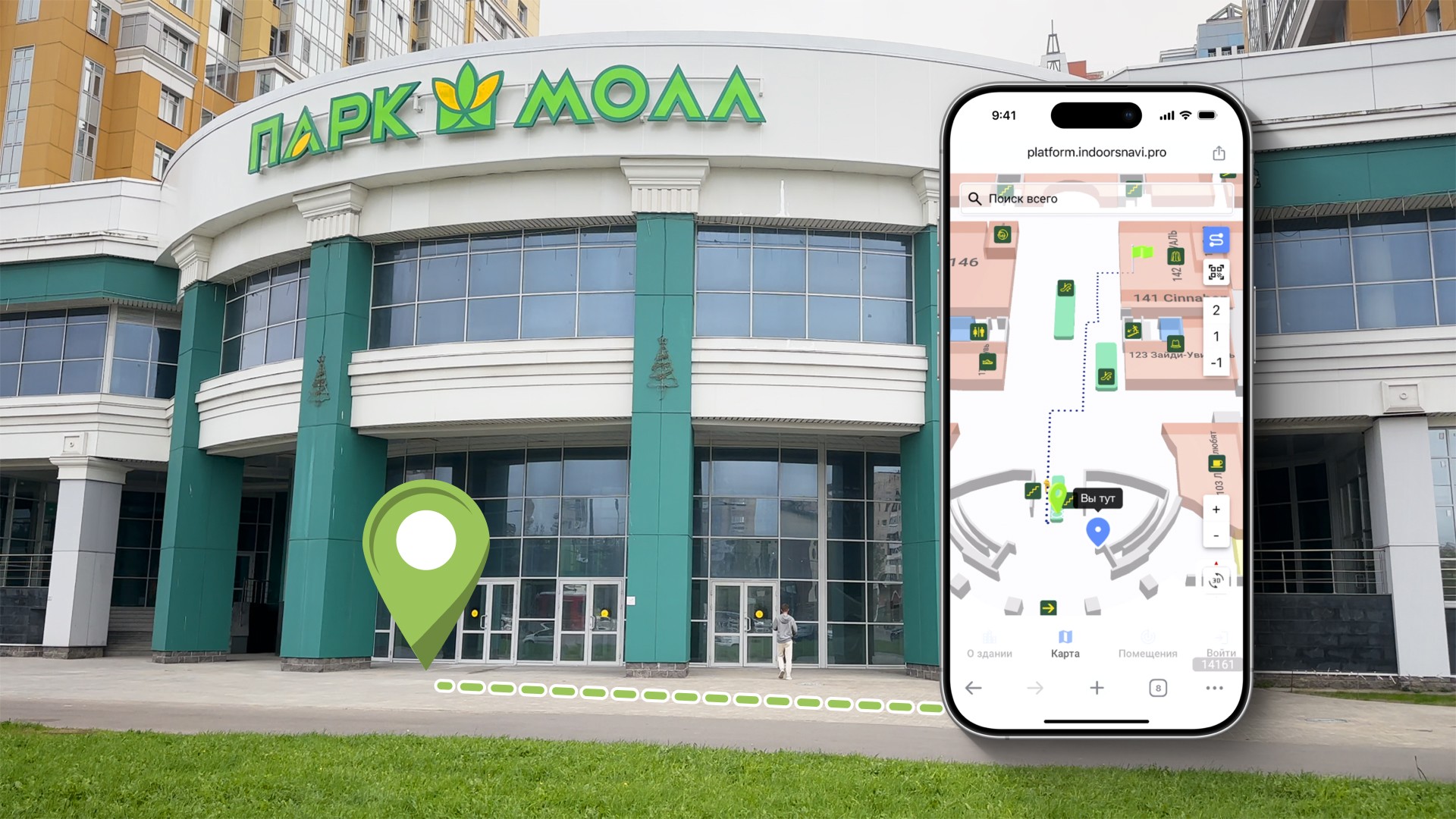QR навигация
QR навигация – это бюджетное решение, позволяющее реализовывать систему цифровой навигации в помещении без развертывания дополнительной инфраструктуры.
Навигация по QR кодам — это простой способ решения навигации в помещениях, который дает возможность определения своего положения по QR кодам без установленного мобильного приложения и построения маршрута в веб браузере.
В основном QR-навигация – это QR метки, которые сканируются камерой устройства и открывается интерактивная карта помещения с указанием точного местоположения пользователя на ней.

Основные преимущества применение QR навигации в помещениях
Быстрое ориентирование
Быстрое позиционирование в помещении, поиск точек интереса и кратчайший маршрут к ним, информация о нужном объекте в мобильном телефоне.
Доступно всем
QR-коды можно размещать на любых поверхностях и носителях: стены, пол, лифты, информационные стенды и прочие объекты в здании.
Просто использовать
Без мобильного приложения. Нет необходимости устанавливать приложение, карта открывается в браузере устройства пользователя.
Дешево внедрить
Внедрение QR navigation дешевле альтернативных решений навигации в помещениях, так как не требует наличия дополнительного оборудования.
Главные достоинства систем QR-навигации кроются в доступности и простоте внедрения, а так же широкой сфере использования.
Навигацию в помещениях по QR кодам можно использовать в торговых центрах, выставочных комплексах, высших учебных заведениях, медицинских учреждениях: поликлиниках и больницах, стадионах и спортивных комплексах, музеях, гостиницах и отелях, бизнес-центрах и офисных помещениях, складах и фабриках, а так же на парковках торговых комплексов.
Основной функционал QR навигации основан на распознавании QR-кодов и построения маршрута от места считывания QR кода, или выбранной точки на карте, до требуемого объекта или помещения.
Наша indoor-навигация с помощью QR-кодов состоит из web виджета с картой и web панели управления навигацией, в которой администратор создает интерактивную карту, маршруты, добавляет необходимые помещения, описания и изображения к нам.
Кейсы использования
Как работает навигация с QR кодами
Все больше и больше появляется крупных зданий и сооружений, сориентироваться в которых становится все труднее, а найти нужный магазина или авто на парковке дольше, чем совершить покупку.
Ускорить процесс ориентирования и поиска нужного помещения помогает платформа Индорс Навигейшн и ее модуль QR-навигация в зданиях.
Часто бывает, что для проведения встречи необходимо объяснять всем посетителям как найти переговорную комнату или идти встречать их во входную зону офиса или бизнес-центра. А так как офисные комплексы с каждым годом становятся больше и больше, в их состав входит несколько корпусов, в которых самостоятельный поиск найти нужного помещения может занять очень большое время, необходимо применение современных систем навигации в помещениях, например на основе Indoors Navigation Platform, которая так же позволяет осуществлять QR навигацию в помещениях.
QR-навигация в помещении поможет ориентироваться и на транспортных объектах, например на вокзале или в аэропорту. Быстро определить как пройти к кассе или к стойке регистрации, найти нужный перрон или выход на посадку (гейт), можно используя геоинформационную систему Индорс Навигейшн, которая поможет сократить время на поиски за счет применения современных систем геолокации, в том числе и навигации по QR-кодам.
Подробную информацию о геолокационных решениях для помещений можно найти в нашем блоге.
INDOORS SDK iOS
Indoor навигация с помощью QR-кодов может быть реализована и в мобильном приложении за счет внедрения INDOORS SDK для iOS и Android устройств.
Тематический кейс в нашем портфолио
Мы предоставляем информацию о всех возможностях нашей платформы с детальным описанием интеграции API и SDK.
Поддержка
Чтобы экономить время разработчиков мы оказываем консультации и техническую поддержку 24/7.

